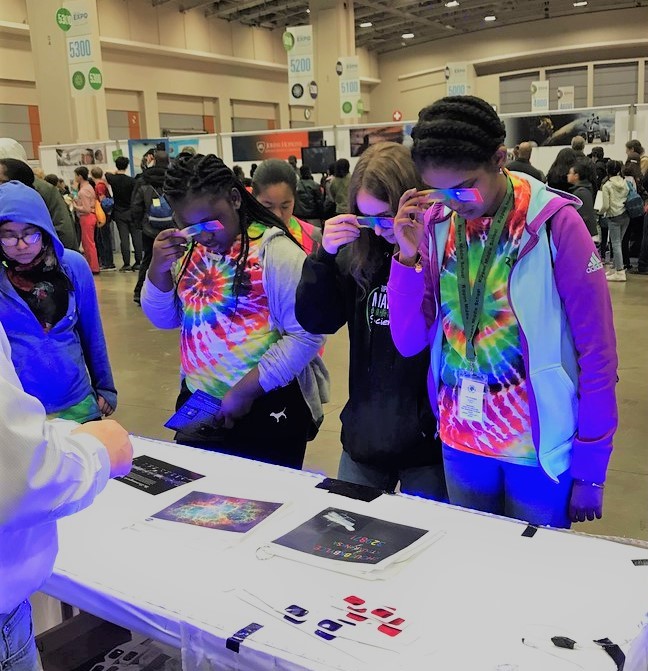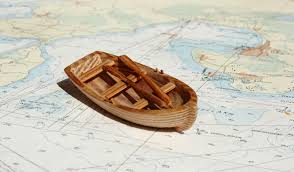1.1 Description
The core idea of Science Marathon (Scithon) is mainly based on the need to communicate various science-related topics (i.e. Astronomy, Physics, Mathematics, Biology, Chemistry and Engineering) all at once, in an informal environment of an educational and entertaining nature. The event could be held several times a year and is preferably hosted outdoors.
Science Marathon was inspired to resemble a treasure hunt with six individual stations/points (Astronomy, Physics, Mathematics, Biology, Chemistry and Engineering) where the attendees are encouraged to solve a series of scientific puzzles and complete a number of hands-on activities in order to advance to the next location of the game. Each station/point is correlated with a different scientific topic, the selection of which can vary from the six stations proposed above. The main purpose of the game is to complete all the quests and get to the finish line by solving all the riddles correctly.
1.2 Objective
Science Marathon (Scithon) has multiple aims. It focuses primarily on forming a strong correlation between science and entertainment. Since its main idea is based on a fun and educational game, its primary purpose is also, by definition, to spark the interest of its target audience concerning scientific topics and motivate them to engage in the science learning process.
Secondly, in case that Partner Institutions are appointed to curate the theme of each station and present the puzzles (see section 2.3), the event would also aim to bridge the gap between citizens and accomplished scientists, thus creating common ground in making science approachable to everyone.
Moreover, in view of being an event that relies solely on volunteers (besides the organizing team), training sessions are required to be conducted ahead of the marathon. The activities would vary from icebreakers to team bonding, crisis management, and last but not least, they would aid in clarifying the key idea of the event. For more details regarding volunteer recruitment and training refer to section 2.1.
1.3 Structure
General Structure: Single Event
The event organisers should carry the role to coordinate the stations/points and the volunteers appointed to each of them. More specifically, the coordinators should prepare the already trained volunteers prior to the event and give them some last-minute tips on how to engage with the audience as well as supervise the setting of each station. Furthermore, to ensure that the marathon runs according to plan, the coordinators should also be responsible for maintaining an ongoing flow at the stations.
The main implementation of Science Marathon is quite simple as long as there is constant communication between coordinators and volunteers. For a more detailed structure of the event refer to section 4.2.
1.4 Duration
Main Event Duration: A few hours
Project Duration: Indefinitely repeated
Since the event does not have a strict structure the duration of the marathon can vary. Ideally, for 6 stations (as proposed) the duration would be 4-6 hours so that numerous attendees would have time to complete all the quests. It is estimated that for each station the maximum of 10 minutes would be spent by every team until the riddle is solved, hence calculating the duration of one completed marathon to the maximum of 60 minutes per team.
It should be pointed out that each station would be designed to accommodate 3-4 teams at once in order to ensure that as many teams as possible complete the marathon in the time frame given, maintaining the 60 minutes per team guideline.
2.1 Staff & Volunteers
Volunteer Requirements: Requires volunteer recruitment
Apart from the core organizing team, at least two volunteers are required to be present at each one of the different stations/points of the marathon in order to hand out the puzzles, provide instructions and further guidance if needed. Some basic scientific knowledge is necessary, enough to understand the puzzles and their solutions. Moreover, one or two volunteers (preferably members of the organizing team) should act as the coordinators of the event to ensure it flows smoothly. These should not be appointed to specific stations, but they should be able to move freely between the stations and deal with any problems that may arise. They are responsible for the rest of the volunteers, and they signal the beginning and end of the marathon. Finally, if the organizing team is not able to undertake this task, a small social media team of volunteers should be organised and start operating prior to the event (see section 3.2, Marketing).
All volunteers have to attend training sessions before the marathon, in order to meet one another, familiarize themselves with the event and the puzzles, and work on useful soft skills (communication, crisis management etc). The training will be coordinated by the organizing team.
Supposing there are 6 stations, and the marathon lasts for 6 hours, we would need at least 12 volunteers (24 if the duration of the game is broken up into 2 three-hour shifts), plus one or two coordinators. If a social media team of two people is also active, a total of 28 volunteers could be involved in this particular marathon (whereas a minimum of 13 is required).
2.2 Venue Hire
Venue: Outdoors
Capacity: 21 – 100 people
Science Marathon (Scithon) is meant to be hosted outdoors. Any space big enough to allow the teams to move freely is ideal. A whole city may act as a suitable venue. In case that the marathon is integrated in another science communication event (as it is suggested), the venue could be the same as that of the event. The stations can be adjusted to occupy a small amount of space so it should be easy to place them even in the context of a bigger, crowded event.
Something to take into consideration is that there would be limited materials available for the puzzles, and limited prizes. So despite the activity being held outdoors there is a maximum capacity of participants. It is estimated that for a marathon comprising 6 stations, up to 20 teams of 5 people should be able to join and enjoy the game to the full. This is not strict and can be altered.
2.3 Partner Institutions
Partner Institutions: Not required
Science Marathon can be run independently as a stand-alone event. However, it is strongly suggested that it is organized as part of another science communication event. Therefore collaborations are encouraged between the organizing team and other institutions, such as universities, NGOs and science centers. There is also the possibility of organizing a marathon where a different institution sets up and runs each different station. This holds the potential of accomplished scientists coming in direct contact with the public.
2.4 Budget
Yearly / Project Budget: 501 – 1000€
This refers to the scenario of a marathon with 6 different stations/points, which exists as part of another large science communication event. The costs are not yearly but instead calculated per marathon.
It is noted that in the case of a marathon held as a stand-alone event, there may be costs concerning the hiring of a venue (although it is suggested that part of a neighborhood or city is used to avoid this). There would also be extra costs regarding the marketing (posters and/or paid advertisements, as detailed in section 3.2). If the available budget permits, consider the possibility of purchasing banners for each different station and/or giving away better prizes.
| Budget Point | Details | Cost |
| Personnel Fees |
|
0€ |
| Venue Hire |
|
0€ |
| Marketing |
|
0€ |
| Materials |
|
500 – 700€ |
| Others |
|
300€ |
| Total | 500- 1000€ |
3.1 Target Audience
Target Audience: Secondary School (12–17) / Youths (18–25) / Younger Adults (26–45) / Older Adults (46–64) / Pensioners (65+)
Science Marathon (Scithon) is aimed at a vast audience. Teams participating in the game may be comprised of teenagers, adults, families with children or solely children (under adult supervision). Team members may come from a variety of backgrounds.
An age limitation of 12+ is proposed due to the potential complexity of the puzzles, however the Marathon could be adapted for younger audiences (in that case, the target group would be primary school and adult supervision would be necessary). If needed, the difficulty of the puzzles could also be adjusted to target mainly adults (18+) thus making the game more challenging.
3.2 Marketing
If Science Marathon is held as part of a bigger science communication event, then it should be advertised along with it and be promoted as an element of the event’s schedule. Organisations in cooperation with or participating in the bigger event could prove to be of great help in this endeavor.
The marketing of this game is heavily based on social media. A Facebook event is to be created and shared. Τhe promotion is mainly accomplished through regular posts on Facebook, Instagram, Twitter and other social networks. Part of the online strategy could also be the promotion through different websites and the use of mailing lists to inform possible interested individuals. The goal is to reach a large number of people and encourage them to attend. It is also a good idea to have photos or videos taken during the actual activity to post later in social media as a follow up.
In case of this marathon being organized as a stand-alone event, some additional marketing is deemed necessary. Τhe creation of well designed posters could serve as a means to generate hype for the event. If the budget permits it, advertisements in newspapers, magazines, TV and radio stations could be arranged. Another possibility is finding local partners who would be willing to advertise.
3.3 Dialogic Strategy
Science Marathon is supposed to be accessible to all and appeal to a wide range of people.
The puzzles/quests are meant to be engaging and hands-on whenever possible. They should not be too complex but at the same time remain challenging enough to keep the participants interested throughout the whole game. Thus, each station of the marathon has to be designed with care, taking into consideration that the final result has to be an activity equal parts entertaining and educational.
Τhe nature of the marathon favors the use of fun elements in the communication of science, and this trait should remain prominent in the realization of the event.
4.1 Project Timeline
| Time | Activity |
| Months in advance |
|
| Weeks in advance |
|
| On the day |
|
4.2 Single Event Structure
| Time | Activity |
| 30 – 60 mins |
|
| 4 – 6 hours |
|
4.3 Personnel roles
| Person | Activity |
| Core Team/Coordinators |
|
| Volunteers |
|
4.4 Materials
The basic props needed for the Science Marathon (Scithon) include tables and chairs to set up the stations, which could be provided by the venue if it is integrated in a bigger science communication event, otherwise they should be provided by the organizing team. Materials for the puzzles and prizes should also be purchased months in advance so as to have enough time to construct the puzzles. The equipment needed for the puzzles can vary according to which topics will be chosen for each station. For more information refer to section 7.
Additional key materials for each station regarding the puzzles could be provided by the Partner Institution which is responsible for that station. In that case, the Partner Institution could perhaps provide more costly and advanced equipment (such as laptops or other electronic devices) to be used for the puzzles (refer to section 2.3).
4.5 Other Logistics
Secondary needs may include extra banners (one for each station) if the budget allows it, as well as extra refreshments for institutions’ teams. Tables and chairs if not provided by the venue as stated on section 4.4 should be purchased by the organizing team. Additionally T-shirts for the volunteers should also be accounted in the budget and perhaps even the designing of them. It should be mentioned that the materials needed to be purchased can differ for every marathon according to the topics/puzzles chosen for each station.
“Science understanding derives from leisure time, free-choice learning; science understanding was primarily acquired for reasons related to personal interest, need and/or curiosity, so future efforts to understand and support the public’s understanding of science will require approaches that take into account individual differences and the unique personal and context-specific nature of knowledge” (Falk et al., 2007).
To further support the above statement, Science Marathon (Scithon) attempts to communicate scientific matters in a groundbreaking and informal way which intrigues the participants to gain knowledge, while at the same time creating a strong correlation between entertainment and science. It resorts to alternative techniques rather than the traditional lecture around a topic and therefore creates an opportune moment to communicate scientific matters. Its main benefit though, is its adjustability. More stations could be added to cover more topics (Geology, Algebra, Geometry, Earth Sciences) and the structure of the event could be adapted to cater to the needs of its target audience. Moreover the marathon could be designed to immerse the audience in only one specific scientific subject. In that case the stations would maintain the key topic while presenting relative puzzles.
The volunteers, as stated before, play a key role in the realization of this event, therefore training is designed to improve their skill set. The huge range of skills they can acquire vary from time management to problem solving and primarily learning to work in a team efficiently. Since we are referring to a science communication event, another skill that is developed would be actively engaging in the process while explaining the puzzles to the audience, and preparing to illuminate them in case needed. Furthermore, the volunteers would have the opportunity to discuss with accomplished scientists various scientific topics and make contact with institutions. All in all, it would be a beneficial process for them.
The easiest way to acquire feedback on the event is talking to attendees. This could be done by the volunteers in the last station, who could ask a few brief questions about the attendees’ experience and write down the answers. Keep track of the number of people participating in the marathon and compare it to the number of people who actually finished it to check the level of engagement.
If a more formal evaluation is desired, a short questionnaire could be created and handed out at the last station. This should include questions to gather some demographic data about the attendees (age, gender, occupation), as well as questions regarding the participants’ level of satisfaction with the event and possible increased scientific awareness. There should also be the opportunity for the participants to make general comments or suggestions towards the improvement of the marathon.
If there is negative feedback, steps need to be taken by the organizing team (taking into account the attendees’ comments), in order to improve future events accordingly.
John H. Falk, Martin Storksdieck, Lynn D. Dierking, Investigating public science interest and understanding: evidence for the importance of free-choice learning (2007)
Resources with ideas for the volunteer training:
https://www.icebreakers.ws/
http://wilderdom.com/games/
http://www.funretrospectives.com/
And for the science puzzles/challenges:
http://sciencespot.net/Pages/classpuzzle.html
http://www.instructables.com/id/Project-Based-Engineering-for-Kids/
https://thehomeschoolscientist.com/100-engineering-projects-kids/
http://astroedu.iau.org/en/
https://www.thoughtco.com/great-biology-activities-and-lessons-373325
https://littlebinsforlittlehands.com/chemistry-activities-experiments-kids/








